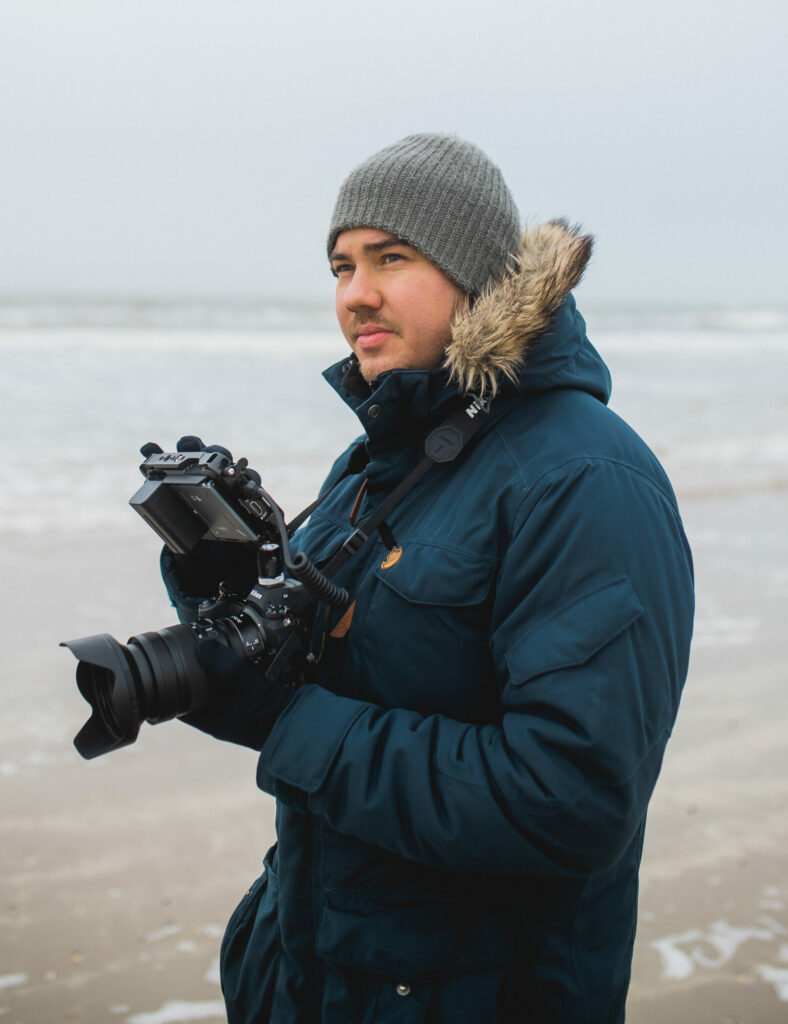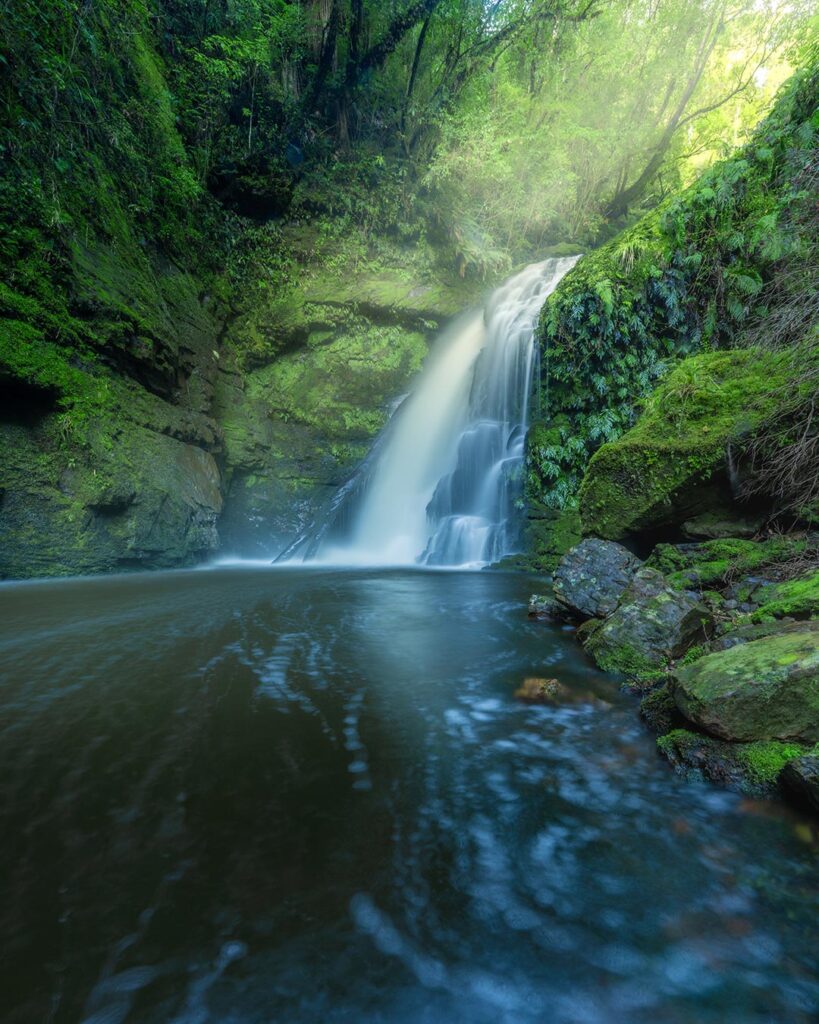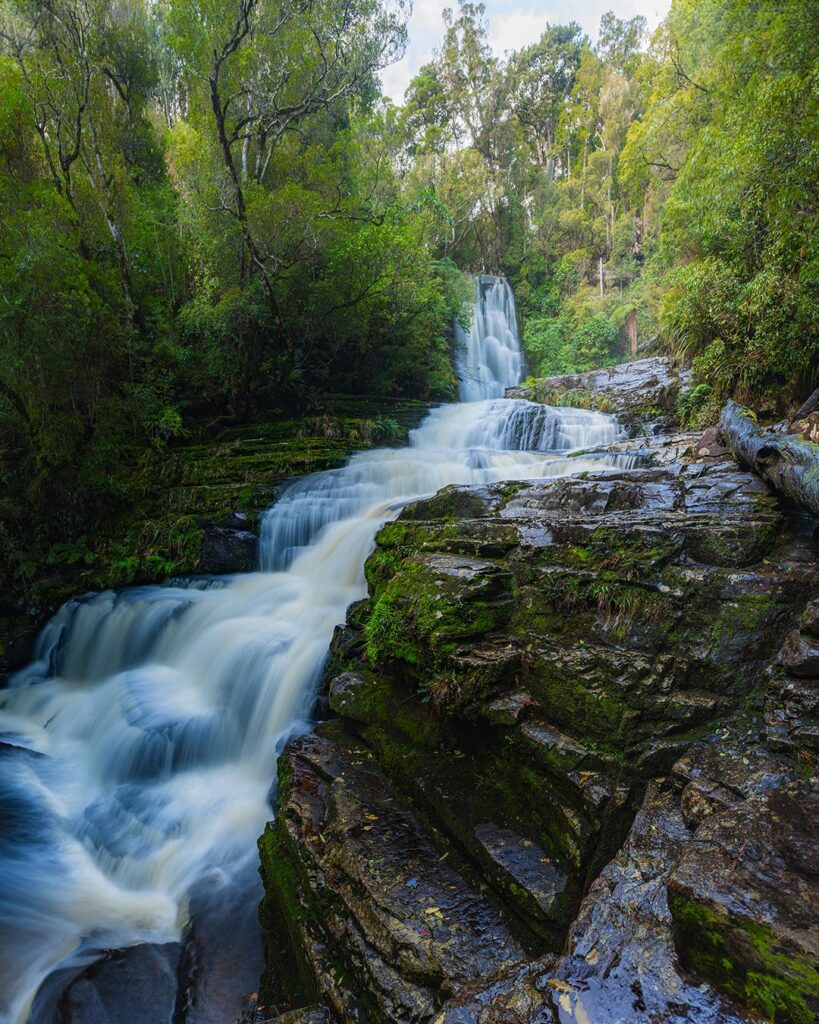Copyright 2025 © All rights Reserved
Chasing Waterfalls in the Catlins, New Zealand
Exploring the waterfalls of the Catlins in New Zealand has been one of my most rewarding experiences as a travel photographer. This lush, remote region is home to some truly breathtaking cascades, each offering its own unique charm. Whether it’s the sound of rushing water or the misty atmosphere enveloping the forest, these waterfalls provide endless opportunities for capturing nature at its most beautiful. Here’s a look at the highlights from my journey and some tips on how I photographed them using my Nikon gear.

Nicolas Jægergaard

6 Waterfalls to visit
Purakaunui Falls
One of the most iconic waterfalls in the Catlins, Purakaunui Falls is a must-see. Its elegant, multi-tiered cascade is truly a sight to behold, especially after a heavy rainfall when the water flows powerfully over the rocks. I found the composition here almost sets itself up, with the layered falls framed by dense native bush—an absolute dream for landscape photography.
Horseshoe Falls
Horseshoe Falls is another gem, living up to its name with a graceful, horseshoe-shaped flow. It’s a peaceful spot, surrounded by lush greenery that perfectly complements the gentle curve of the water. This waterfall is ideal for those looking to capture the more tranquil side of nature.
Matai Falls
Matai Falls might not be the tallest, but its charm lies in its setting. Water trickles gently over moss-covered rocks, creating a serene, intimate scene. Here, I enjoyed experimenting with different shutter speeds to create that smooth, silky water effect that makes waterfall photography so mesmerizing.
The McLean Falls Series (Upper, Middle, and Lower)
Although I’m not entirely sure about the exact names, the Upper, Middle, and Lower sections of McLean Falls offer a variety of perspectives, each with its own unique appeal. From the powerful rush at the upper section to the more subdued flows below, these falls showcase the versatility of

Middle of McLeans Falls.
Used gear: Nikon Z9 & NIKKOR 14-24mm 2.8 S with Polarizing filter
Settings: 6 sec, f/18, ISO 64

Upper of McLeans Falls.
12 photos stacked in a Panorama-HDR.
Used gear: Nikon Z9 & NIKKOR 14-24mm 2.8 S with Polarizing filter
Settings: 0.4 sec, f/10, ISO 64
Tips for Capturing Waterfalls
One thing I’ve learned: don’t shy away from visiting waterfalls after heavy rain. The increased flow can add drama to your shots, and grey weather often works in your favor by eliminating harsh lighting conditions that can be tricky to manage. Soft, diffused light allows you to capture all the details without the need to battle with overly bright or shadowy areas.
The Gear I Use
For these shots, I relied on my trusty Nikon Z9 paired with the NIKKOR 14-24mm f/2.8 S lens, which is my go-to for wide-angle compositions that capture the full scope of these waterfalls. Occasionally, I’ll switch to the NIKKOR 24-70mm f/2.8 S, but that’s rare when I’m chasing expansive scenes like these. A sturdy tripod is essential for keeping your camera steady during long exposures, and I highly recommend using an ND or polarizing filter to slow down your shutter speed and achieve that smooth, flowing water effect.
Recommended Settings:
- Shutter Speed: Depending on the water’s speed, aim for a range from 1/10 seconds to 30 seconds or more. Fast-flowing water might only require about 1/1.3 seconds.
- ISO: Keep it as low as possible—usually between 64 and 200—to minimize noise.
- Aperture: Adjust as necessary to achieve the right shutter speed; typically, an aperture of f/7.1 to f/16 works well.
Connect and Explore More
If you’re inspired by these waterfalls or want to bring a piece of the Catlins into your home, visit my print shop where you can find exclusive, limited-edition prints of these scenes—each with a maximum of 10 copies available. And don’t forget to follow me on Instagram @nicolasjaegergaard for more of my adventures, photography tips, and behind-the-scenes content.
